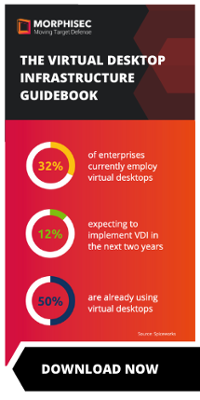
The coronavirus pandemic has forced companies to experiment with remote work in ways they never had before. For many, working from home was the only viable option for weeks or months due to mandatory shutdown orders and grave public health concerns. But that doesn’t explain why 74% of the CFOs recently surveyed by Gartner plan to make some positions permanently remote even after the pandemic ends.
As employers and their employees have discovered throughout 2020, working from home comes with many upsides. Employees get to skip their commute and abandon their cubicle while their employers cut overhead costs and (in some cases) improve operational efficiency. Done well, it’s a win for all – explaining why the work-from-home world is here to stay.
Embracing this shift, however, takes more than just enthusiasm. It also requires technology that can recreate the office anywhere. Plenty of products claim to do that, but few extend the features of the office as far and wide as VDI.
For companies rethinking how they work and wondering whether congregating for 40 hours a week makes sense any more, VDI is crucial.
A Quick Explanation of Virtual Desktop Infrastructure

VDIs are designed to give users remote access to their desktop from anywhere with an internet connection. The virtualized desktops that make up a VDI are deployed using a hypervisor on hardware called a “host-server.” The physical host-server hardware can be managed either on-premises or through a third-party cloud provider, but the core concept is always the same: a desktop on demand.
There are two types of virtual desktops: persistent and non-persistent. A “persistent” VDI will retain any changes a user makes between sessions, just like a physical desktop sitting on someone’s office desk. A “non-persistent” VDI won’t save the changes and returns to a generic desktop at the start of each session. Both options have pros and cons, while also offering remote workers access to some or all the apps and data they need to work effectively – at home, in an airport, or on-site with a client.
How VDI Rises to the Moment
Half of all enterprises and a quarter of SMEs already utilize virtual machines. Adoption will increase swiftly and steeply due to the coronavirus pandemic, but not entirely because more people are working from home. In practice, VDI either introduces or enhances many of the strengths companies need now and later:
- Managing IT Costs – Instead of managing dozens of machines, IT manages a central virtual image that users access through their own device. VDIs help companies save on hardware and on maintenance.
- Extending Understanding – Virtual machines don’t just facilitate remote work; they unleash data and applications from the bounds of the office so that users have anytime, anywhere access to whatever they need. The office is everywhere.
- Controlling Data Privacy – VDIs give administrators central control over data access privileges, making it easier to comply with data privacy regulations like HIPAA. Central control will be especially important as data volumes grow along with privacy regulations and their attendant fines.
- Repurposing Wasted Resources – When it only takes a thin client (something with minimal computing power) to run a virtual machine, companies can repurpose older laptops or tablets they have lying around and get value from something considered scrap.
- Securing Desktop Environments – Since IT has strict control over the centralized environment of a VDI, they can prevent users from installing unwanted apps on the desktop and control for other risky or unwanted behaviors – making IT even more efficient and cost-effective.
- Improving Patch Management – Hackers can’t seize on unpatched vulnerabilities to launch attacks when IT only needs to patch one virtual machine to update every user. Security becomes stronger and more manageable at the same time.
Securing the Work-From-Home World
VDIs undoubtedly make companies more secure...but they don’t make security threats irrelevant. In fact, in a work-from-home world where cloud workloads proliferate and all data is digital, cybersecurity becomes an exponentially bigger issue.
In practice, virtual machines require the same robust security as the physical machines they replace. Hackers can compromise virtual machines just like any other endpoint, and ending a session won’t always stop an attack. Once inside a session, hackers can move laterally into a server and target the host machine that’s rich with data. It would be a grave mistake to assume that virtual machines, on their own, deter hackers in any meaningful way.
Fortunately, it doesn’t take a suite of security products to lock down virtual machines. But, like many things in the emerging work-from-home world, it will take a new approach: proactive cybersecurity. Click below to learn more about how Morphisec achieves this goal.






.png?width=571&height=160&name=iso27001-(2).png)